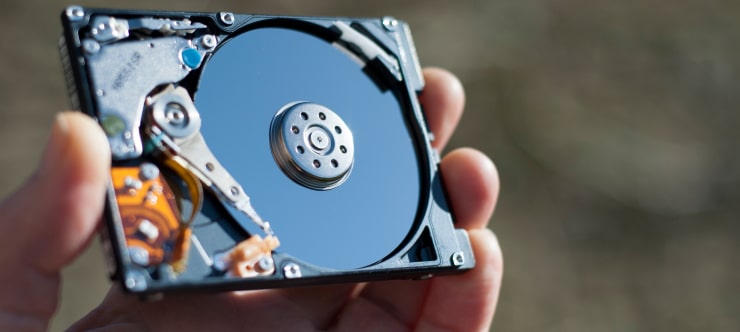What's the Difference Between RTO and RPO?

I think there's an issue with my storage device, but I'm not sure
Start a free evaluationWhen it comes to disaster recovery, understanding the difference between Recovery Time Objective (RTO) and Recovery Point Objective (RPO) is essential in ensuring your disaster recovery plan (DRP) is up to date.A Disaster Recovery Plan (DRP) is a comprehensive plan that outlines the steps to take to recover critical applications and data in the event of an outage or disaster. It helps ensure business continuity as it defines how you’ll get back online after a disruption.The plan should include policies, procedures, and strategies for recovery operations and restoring normal operations as quickly as possible.The recovery time objective (RTO) is the targeted duration of time between the event of failure and the point where operations resume. While recovery point objective (RPO) is the maximum length of time permitted to restore that data.
What is the Recovery Time Objective (RTO)?
The recovery time objective (RTO) is the time it should take to restore your systems following an incident or crisis.This metric determines when your systems will be back up and running again and affects both the financial cost of downtime but also the overall reputation of your company. A longer RTO means it will take longer to return to normal operations, leading to more downtime and higher costs.
What is the Recovery Point Objective (RPO)?
The recovery point objective (RPO) sets the maximum length of time that data can be restored after a disaster or outage. This metric determines how much data you’re willing to lose in an incident or crisis.A shorter RPO means less data loss but requires more frequent backups, which may require additional storage capacity.
Differences between RTO and RPO in disaster recovery planning
The goal of setting both objectives should be to have quick restore times with minimal data loss in the event of a disaster or outage. Even though both are metrics measures in disaster recovery, there are many differences between RTO and RPO.For example, RTO (Recovery Time Objective) is the targeted duration of time between an incident and when operations resume. While RPO (Recovery Point Objective) is the maximum length of time that data can be restored after a disaster or outage.
Purpose
RTO measures how quickly you’ll recover from a disruption to normal operations.RPO measures how much data you’re willing to lose in an incident or crisis.
Priority
An organization's RTO should be shorter than its RPO so that its systems can be brought back up as fast as possible with a minimal amount of data loss.
Cost
A longer recovery time objective results in more downtime and higher costs. While a shorter recovery point objective requires more frequent backups which may require additional storage capacity
How do you calculate RPO?
The calculation of RPO involves determining the frequency with which backups are made and the length of time between successive backups. This means that most RPOs are measured by hours of data loss, that is how many hours have elapsed since the most recent backup when the system outage occurred.The goal is to set an RPO that meets your organization's requirement for data loss, while also being reasonable in terms of cost and resources.It is essential to establish a regular backup schedule so that any changes can be easily recovered in case of an outage or disaster. Additionally, you should consider utilizing cloud-based backups as these can ensure multiple copies of data are stored offsite and protected from local disasters.By establishing a balance between Recovery Time Objective (RTO) and Recovery Point Objective (RPO), organizations can ensure their Disaster Recovery Plans are comprehensive and effective in restoring critical systems quickly with minimal loss of data.
Examples of RPO and RTO
A company might set an RPO of 2 hours, which means that it can tolerate the loss of no more than two hours’ worth of data in the event of a disaster.Similarly, a company might set an RTO of 4 hours, meaning that its systems must be back up and running within four hours after a disruption.These parameters should depend on your organization's requirements for system restore times and data loss. It is important to note that the goal is to have quick restore times with minimal data loss in the event of a disaster or outage.It is essential to consider both elements when developing a Disaster Recovery Plan as they are two very different elements that need to be carefully mapped out.
How backups improve RTO and RPO
Regular backups are an essential part of any disaster recovery plan as they can provide a way to recover data that has been lost or corrupted in the event of an outage.Backups should be done frequently so that all changes are saved and can easily be restored if needed. This will help to reduce the recovery time objective (RTO) as well as the recovery point objective (RPO).By having a backup solution implemented, organizations can ensure their systems are back up and running quickly with minimal data loss when an incident occurs.Additionally, having multiple copies of backups stored offsite or in the cloud can help protect against local disasters such as floods, fires, and other natural disasters.
Summary
Ultimately, understanding the difference between recovery time objective (RTO) and recovery point objective (RPO) is important to consider when developing a Disaster Recovery Plan. Setting clear objectives for both will help ensure successful system restores with minimal data loss in the event of an incident.Additionally, setting an appropriate backup schedule is essential for calculating your RPO and ensuring regular backups are made. By understanding and considering both elements carefully, organizations can ensure their Disaster Recovery Plans are comprehensive and effective in restoring critical systems quickly with minimal loss of data.SalvageData experts are ready to help you with your disaster recovery planning as well as with incident response solutions. Contact our data recovery experts 24/7 for emergency services.
Related services
These are the most commonly requested data recovery services. At our headquarters' cleanroom lab, our certified engineers conduct a thorough review of any type of physical storage device, determining if there is logical or physical damage and carefully restoring all of the lost files.ces.

External Drive Data Recovery
We recover data from both external SSD and HDD drives. Rely on certified experts to restore your important files from damaged or corrupted external drives.

Hard Drive Data Recovery
Recover data from all brands of HDD, PC hard drives, and hybrid disks. Our specialists ensure fast and secure recovery for any data loss scenario.

NAS Data Recovery
Recover data from NAS devices, including RAID configurations. Our team handles all types of NAS systems and ensures data recovery with minimal downtime.

RAID Data Recovery
Our RAID data recovery services cover RAID 0, 1, 5, 10, and other configurations. We offer expert solutions for failed, degraded, or corrupted RAID arrays.

SAN Data Recovery
Our team specializes in handling SAN devices from leading manufacturers like Dell EMC, HP, and IBM, ensuring efficient recovery with minimal disruption to your operations.

SD Card Data Recovery
Our recovery experts specialize in restoring data from SD and memory cards. We guarantee quick recovery with a no-data, no-charge policy.

SSD Data Recovery
Our data recovery experts handle all SSD data loss scenarios with advanced tools, ensuring maximum recovery with high-security protocols.

USB Flash Drive Data Recovery
Recover lost data from USB flash drives, regardless of the damage or brand. We offer free in-lab evaluations to assess data recovery needs.
If you’re unsure about which data recovery service to choose, let our team assist you in selecting the appropriate solutions. We understand the anxiety that comes with a sudden drive failure, and we are more prompt in our actions compared to other recovery service providers.



